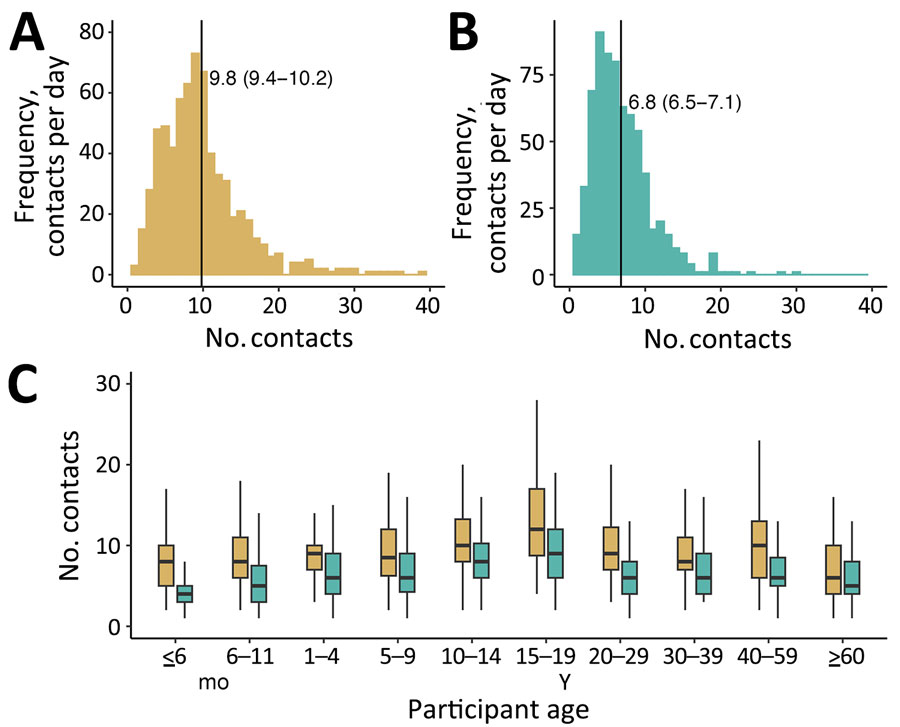Volume 31, Number 1—January 2025
Research
Social Contact Patterns in Rural and Urban Settings, Mozambique, 2021–2022
Figure 1

Figure 1. Distribution patterns of number of contacts in rural and urban areas in study of social contact patterns, Mozambique, 2022. A, B) Density distribution of the number of contacts per person in the rural (A) and urban (B) sites. Black vertical lines indicate means; 95% CIs are provided in parentheses. C) Boxplots of the distribution of number of contacts by site (gold, rural; aqua, urban). Horizontal lines within boxes indicate median number of contacts; top and bottom lines indicate interquartile ranges; error bars indicate 95% CIs.
1These first authors contributed equally to this article.
2These authors were co–principal investigators.
Page created: December 02, 2024
Page updated: December 22, 2024
Page reviewed: December 22, 2024
The conclusions, findings, and opinions expressed by authors contributing to this journal do not necessarily reflect the official position of the U.S. Department of Health and Human Services, the Public Health Service, the Centers for Disease Control and Prevention, or the authors' affiliated institutions. Use of trade names is for identification only and does not imply endorsement by any of the groups named above.